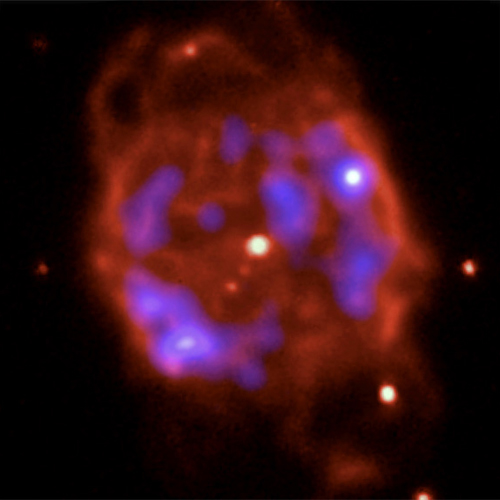NGC 40: A planetary nebula about 3,000 light years from Earth
Caption: This composite X-ray (blue)/optical (red) image of NGC 40 shows hot gas around a dying, Sun-like star. Planetary nebulas get their name because they look like the disk of a planet when viewed with a small telescope. They are in a late stage in their evolution when most of the star's nuclear fusion energy sources have been used up. The star has puffed off its outer layer to leave behind a smaller, hot star with a surface temperature of about 50,000 degrees Celsius. Radiation from the hot star heats the ejected matter to about 10,000 degrees to produce the complex and graceful nebula (red) about a light year across. The X-rays reveal a shell of multimillion degree gas (blue) that has been compressed and heated by a 2-million-miles-per-hour stellar wind from the dying star.
Chandra X-ray Observatory ACIS Image
|


